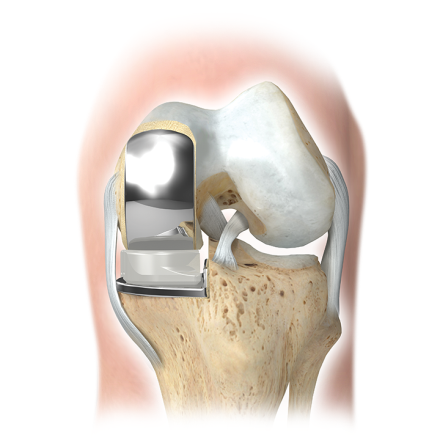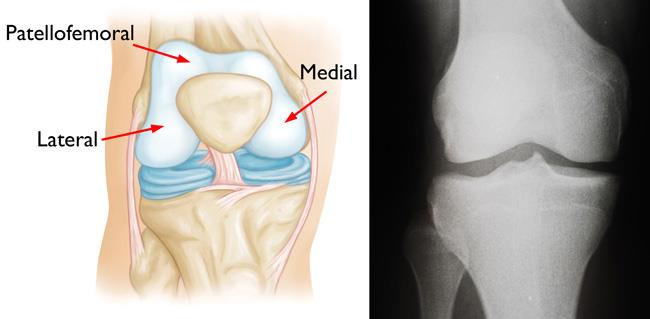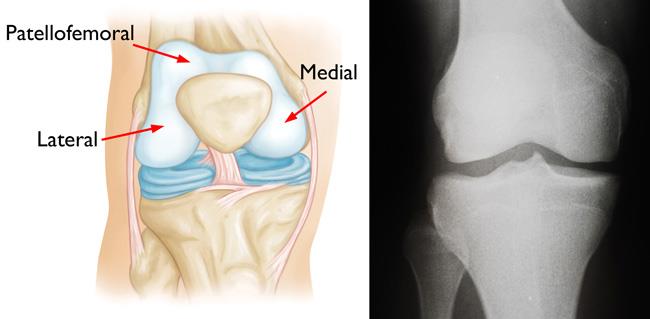Unicompartmental Knee Replacement
During knee replacement surgery, damaged bone and cartilage is resurfaced with metal and plastic components. In unicompartmental knee replacement (also called “partial” knee replacement) only a portion of the knee is resurfaced. This procedure is an alternative to total knee replacement for patients whose disease is limited to just one area of the knee.
Because a partial knee replacement is done through a smaller incision, patients usually spend less time in the hospital and return to normal activities sooner than total knee replacement patients.
There are a range of treatments for knee osteoarthritis and your doctor will discuss with you the options that will best relieve your individual osteoarthritis symptoms.


In knee osteoarthritis, the cartilage protecting the bones of the knee slowly wears away. This can occur throughout the knee joint or just in a single area of the knee.
Your knee is divided into three major compartments:
- Medial compartment (the inside part of the knee)
- Lateral compartment (the outside part)
- Patellofemoral compartment (the front of the knee between the kneecap and thighbone)


(Left) A normal knee joint: The medial, lateral, and patellofemoral compartments are shown with red arrows. (Right) An x-ray of a normal knee joint showing healthy space between the bones.
Advanced osteoarthritis that is limited to a single compartment may be treated with a unicompartmental knee replacement. During this procedure, the damaged compartment is replaced with metal and plastic. The healthy cartilage and bone, as well as all of the ligaments are preserved.

Advantages of Partial Knee Replacement
Multiple studies show that a majority of patients who are appropriate candidates for the procedure have good results with unicompartmental knee replacement.
The advantages of partial knee replacement over total knee replacement include:
- Quicker recovery
- Less pain after surgery
- Less blood loss
Also, because the bone, cartilage, and ligaments in the healthy parts of the knee are kept, many patients report that a unicompartmental knee replacement feels more natural than a total knee replacement. A unicompartmental knee may also bend better.
Candidates for Surgery
If your osteoarthritis has advanced and nonsurgical treatment options are no longer relieving your symptoms, your doctor may recommend knee replacement surgery.
In order to be a candidate for unicompartmental knee replacement, your arthritis must be limited to one compartment of your knee. In addition, if you have any of the following characteristics, you may not be eligible for the procedure:
- Inflammatory arthritis
- Significant knee stiffness
- Ligament damage
With proper patient selection, modern unicompartmental knee replacements have demonstrated excellent medium- and long-term results in both younger and older patients.
